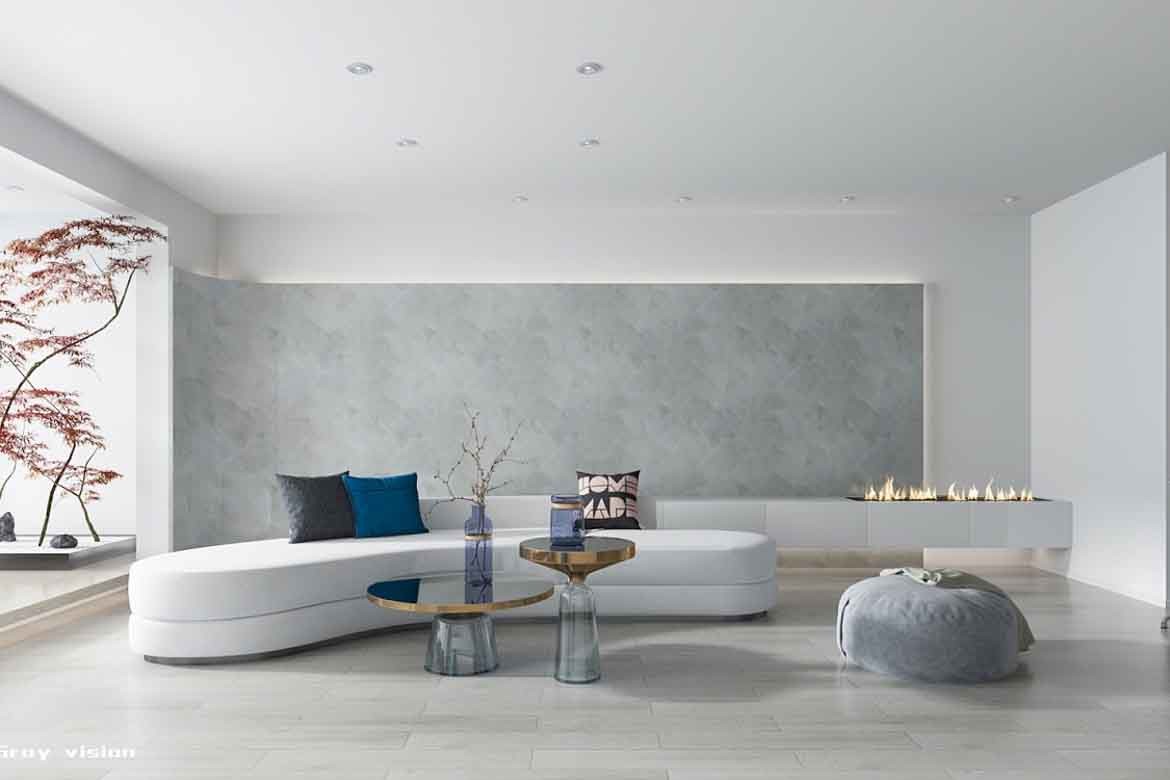
Minimalism often walks on a knife’s edge between stylish and clinical. Here’s how to make sure your minimalist home design is as comfortable as possible.
What is minimalism?
Story continues below advertisement
Minimalism is a design movement which gained popularity during the late 1960s and has since expanded across visual art, interior design, architecture, music, and fashion. Minimalism waned in popularity throughout the late 20th century, but has recently seen a huge resurgence. Modern minimalism is inherently tied to Scandinavian design principles in the public consciousness, as Scandi minimalism swept across the globe in a flurry of magazines, awards, and social media trends.
It is not difficult to identify and define minimalistic designs. Minimalism is characterised by a sense of symmetry, purpose, cleanliness and monochromia. Minimalistic spaces are flooded with natural light, slim furniture, and the bare essentials. A minimalistic home design will place emphasis on the negative space, using furniture and vector lines to accentuate the floor space and open air within an environment. This has the intended effect of making the room feel larger, more organized, and open.
Minimalism began as a reaction against the overzealous consumerism that was cluttering the homes of families around the world. As such, true minimalistic designs should see a return to the essentials of home comfort and little else. Trinkets, décor objects, colours and artwork is kept simple and sparing. Minimalism is designed to inspire inner peace and quiet a cluttered mind by providing an ordered space.
Story continues below advertisement
However, modern minimalism has received criticism across the world for becoming the very thing that it sought to combat. Modern minimalism has certainly evolved into a design style for the affluent designer rather than those who want to create beautiful spaces with less. Only those who can afford to buy new things at the drop of a hat can afford to not have clutter.
This has interestingly been the catalyst for a new emergent design culture particularly popular with today’s youth – maximalism, minimalism’s polar opposite. Maximalism encourages filling spaces with the kind of sentimental objects and simple trinkets that minimalists would likely deem unnecessary. Read more about maximalism and today’s trends here.
Story continues below advertisement
What is a minimalist?
Minimalism is not just a design style – it can also be a lifestyle. Minimalist living is characterized by a commitment to simplicity and function over form. Minimalists only use and own things that serve an immediate and necessary purpose. Minimalists also lead an inherently spiritual lifestyle and often believe that cluttered spaces can get in the way of self-reflection. Minimalists tend to meditate, eat simply, and think carefully about waste reduction.
How to become a minimalist
Becoming a minimalist is not as simple as redesigning your home. On average, it takes about 1-2 years to successfully transition into a functionally minimalist lifestyle. This means making drastic changes to your habits – particularly when it comes to spending. Another thing that many struggle with when transitioning to a minimalistic lifestyle is the imperative to part with possessions that are not necessary in the eyes of minimalism.
1. Minimalistic apartment
Minimalism is one of the most popular design styles for modern apartments. This is because minimalism makes the most of negative space and keeps clutter to a minimum – an ideal design style for small spaces.
Home décor is an essential part of creating a minimalistic style home in a modern apartment. The minimalist living room pictured above perfectly encapsulates how furniture should be simple, sleek, and suited to function (though not without whimsy). Emphasise clean lines – perhaps a feature wall like the one pictured above will work to tie together your space.
2. Modern minimalist house
Modern minimalist houses are often small and simply designed. The house pictured above is neatly symmetrical, with clean lines creating a sense of strength and structure. This attractive design is also part of what makes minimalist house designs so popular; low cost minimalist houses are available in abundance because they are simple to prefabricate. For more on affordable prefabricated homes in Australia, see here.
3. Minimalist industrial house
Minimalist style homes are all about raw, unrefined textures. This lends particularly well to the steel, concrete and exposed brick of industrialism. Minimal house design will often accentuate open spaces with harsh materials, such as the concrete wall and steel accents in the image above.
5. Small minimalist house
Once again, small homes are perfectly suited to minimalism. A house like the one above is a gorgeous example of the way that minimalism can create large spaces with small dimensions.
The creative shape and crisp, clean lines of the roof leading upward from the dining room create visual intrigue and emphasize the fact that the house is not small due to a lack of space – it is small because it does not need to be large. How better to surmise minimalism?
6. Minimalist tropical house
Minimalism is not just for the icy winters of Scandinavian countries. Tropical minimalism is a vibrant and exciting design style which is gaining more popularity in the warmer areas of the globe – particularly in South America.
The above design of Casa Branca in Brazil is credited with redefining modern minimalism in a tropical setting. Tropical minimalism is characterized by an abundance of natural light, openness to the surrounding landscape, natural fibres and textures such as timber or stone, and muted but happy colours which tone in with the natural surroundings.
7. Minimalist zen house
When it comes to minimalist house ideas, one in particular takes the cake. Japandi design is a hybrid design style that merges two influential minimalistic décor ideas; Scandinavian and Japanese.
Both have a stylistic focus on simplicity, with Japanese style natural materials blending against a subtle Scandinavian colour scheme and simple furniture. The bedroom design above perfectly encapsulates the spiritual simplicity that a zen minimalist design affords. For peace, calm and productivity throughout the day, you cannot do better.